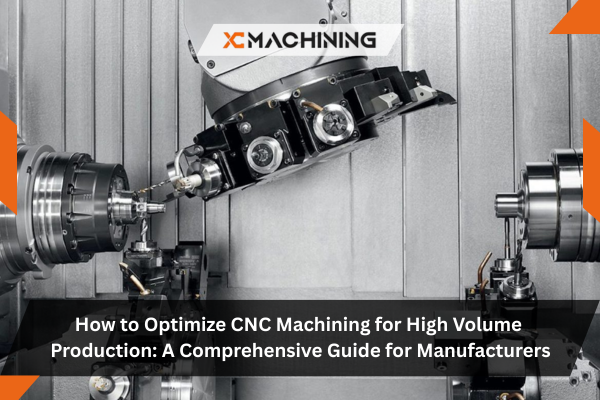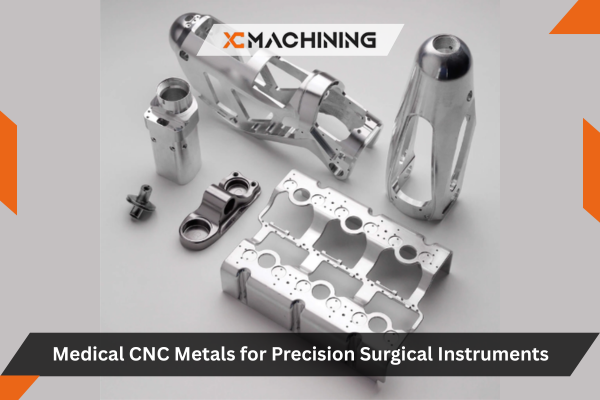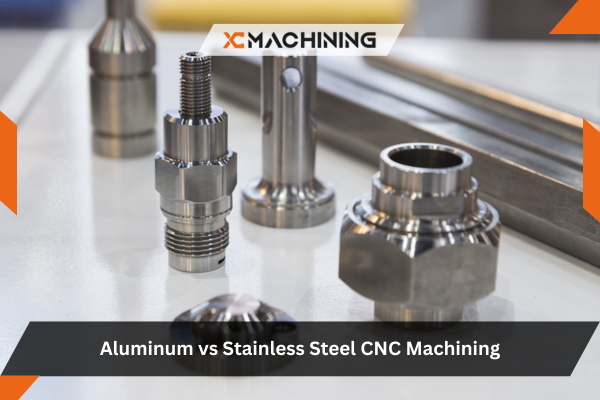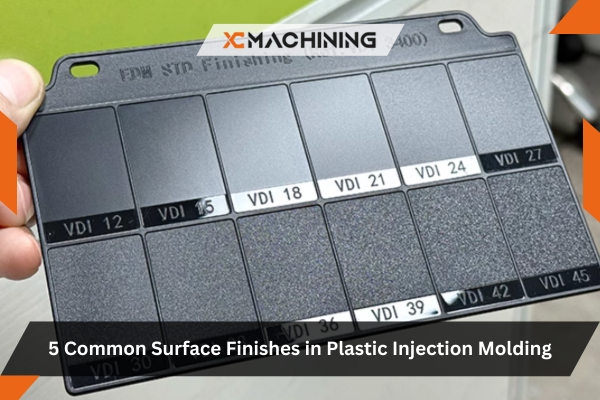What This Guide Covers
Learning how to optimize CNC machining for high-volume production can mean the difference between profitable manufacturing and losing money on every part. After 15 years of working with precision CNC machining services across automotive, aerospace, and industrial sectors, I’ve seen manufacturers transform their operations by implementing systematic optimization strategies.
Índice
In this comprehensive guide:
- Key strategies to optimize CNC machining efficiency
- Proven techniques for reducing cycle times
- Cost reduction methods for high-volume production
- Tooling and fixturing optimization approaches
- Quality control while maintaining production speed
- Real-world optimization examples with measurable results
Whether you’re running custom CNC machining services, managing CNC milling and turning services, or operating stainless steel CNC machining services, these optimization principles apply across materials and machine types to dramatically improve your production economics.
Understanding High-Volume CNC Production Challenges
Last year, a CNC machining services Georgia manufacturer came to me frustrated. They were running 50,000 aluminum housings annually but barely breaking even. Their quoted cycle time was 12 minutes per part, but actual production averaged 18 minutes when you factored in tool changes, setup variations, and quality issues. That 50% time overrun was killing their profitability.
After implementing the optimization strategies I’ll share in this guide, we reduced their actual cycle time to 9.5 minutes—faster than their original quote. This 47% improvement transformed a marginally profitable job into their most successful product line, generating an additional $180,000 in profit annually.
The key insight? To truly optimize CNC machining, you can’t just focus on cutting parameters. You need a systematic approach addressing every aspect of the production process.
The 7 Pillars to Optimize CNC Machining
Based on optimizing hundreds of high-volume production runs, I’ve identified seven critical areas that deliver the biggest impact:
1. Design for Manufacturability (DFM)
Por qué es importante: The design phase determines 70% of your manufacturing costs before a single chip is cut.
Optimization strategies:
Eliminate unnecessary features:
- Remove cosmetic chamfers and breaks that don’t affect function
- Simplify pocket geometries to use standard tooling
- Avoid tight tolerances where looser specs would work
- Minimize depth-to-diameter ratios for holes
Real example: A precision CNC machining services client had specified 0.005″ tolerances on non-critical dimensions throughout their part. We identified that only 3 of 24 dimensions actually needed tight tolerances. By relaxing non-critical dimensions to ±0.010″, we eliminated secondary operations and reduced inspection time by 60%.
Standardize features:
- Use common hole sizes compatible with standard drills
- Employ standard thread sizes
- Design for standard tooling whenever possible
- Minimize tool changes by grouping similar features
Material considerations:
- Design appropriate wall thicknesses for material rigidity
- Consider material-specific machining characteristics
- For stainless steel CNC machining services, design to minimize tool engagement
- Account for material deflection during cutting
2. Optimize Tooling Strategy
High-volume production demands different tooling approaches than prototype work.
Tool selection principles:
Invest in premium tooling:
- High-performance coated carbide tools last 5-10x longer
- While costing 3-4x more, the total cost per part drops dramatically
- Example: A $45 premium endmill lasting 500 parts costs $0.09/part vs. a $12 standard tool lasting 80 parts at $0.15/part
Minimize tool changes:
- Design operations to use the same tool for multiple features
- Group similar operations together
- Consider tools with multiple functions (chamfer mills, combination drills)
Real optimization: Trabajar con CNC plastic machining services operations, we consolidated from 8 tool changes down to 4 by using combination tools and resequencing operations. This saved 3.5 minutes per part—a 22% cycle time reduction.
Tool life management:
- Implement tool life tracking systems
- Replace tools proactively before failure
- Maintain consistent tool offset data
- Keep detailed tool performance records
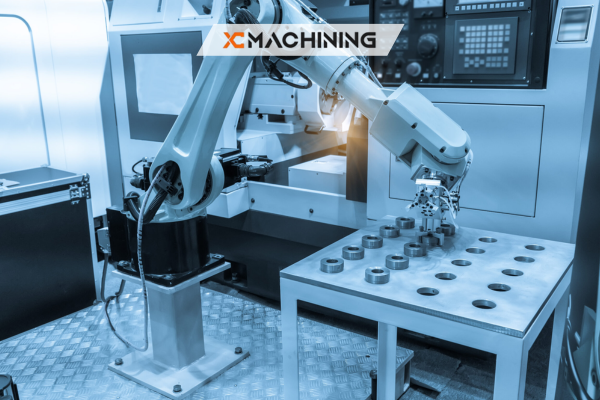
3. Fixture and Workholding Optimization
Poor fixturing is one of the biggest hidden time killers in production.
Quick-change fixturing:
- Invest in modular fixturing systems
- Design fixtures for rapid part loading/unloading
- Minimize clamp points while maintaining rigidity
- Consider hydraulic or pneumatic clamping for consistency
Multi-part fixturing:
- Machine multiple parts per cycle when possible
- Balance production needs with setup complexity
- Account for chip evacuation and tool access
Success story: A custom CNC machining services shop was machining one part at a time in a vise, taking 45 seconds to load/unload. We designed a simple tombstone fixture holding 4 parts, reducing load time to 15 seconds per part and eliminating 2 minutes per cycle.
Fixture validation:
- Verify workholding prevents part movement
- Check clearances for full tool travel
- Test fixture repeatability with CMM measurements
- Document proven fixture setups for consistency
4. Cutting Parameter Optimization
This is where most people start, but it should be step 4, not step 1.
Systematic approach to optimize CNC machining parameters:
| Operation Type | Optimization Priority | Typical Improvement Potential |
|---|---|---|
| Roughing | Maximize material removal rate | 30-50% time reduction |
| Semi-Finishing | Balance speed and surface prep | 15-25% time reduction |
| Acabado | Optimize for surface quality | 10-20% time reduction |
| Perforación | Tool selection and peck cycles | 20-40% time reduction |
| Threading | Single-point vs. taps vs. thread mills | 25-45% time reduction |
Roughing optimization:
- Use adaptive clearing or trochoidal milling
- Maximize depth of cut and stepover
- Prioritize material removal rate over surface finish
- Leave consistent stock for finishing operations
Finishing optimization:
- Use climb milling for better surface finish
- Optimize stepover for desired surface roughness
- Consider high-speed machining techniques
- Match feed rates to desired finish quality
Real data from aluminum CNC milling and turning services:
- Standard roughing: 3.2 cubic inches/minute material removal
- Optimized adaptive roughing: 8.7 cubic inches/minute
- Result: 63% reduction in roughing time
5. Programming and CAM Optimization
How you program directly impacts how efficiently machines run.
CAM strategy optimization:
Tool path efficiency:
- Minimize rapid moves and air cutting
- Optimize lead-in/lead-out moves
- Use efficient stepover patterns
- Eliminate unnecessary retracts
Programming consistency:
- Standardize programming approaches across similar parts
- Create proven operation templates
- Document best practices
- Use parametric programming for part families
Simulation and verification:
- Always verify programs before running on machine
- Check for collisions and overtravel
- Verify tool engagement and loads
- Identify optimization opportunities in simulation
Machine-specific optimization:
- Program to leverage specific machine capabilities
- Use high-speed machining when available
- Optimize for machine acceleration characteristics
- Consider machine rigidity in programming decisions
6. Setup Reduction and Standardization
Setup time is non-productive time. Every minute saved multiplies across production volume.
SMED (Single-Minute Exchange of Die) principles:
Separate internal from external setup:
- Perform tool staging and inspection while machine runs
- Prepare fixtures and workpieces offline
- Stage measured tools in tool carts
- Have quality equipment ready before setup
Real improvement: CNC machining services near me Georgia shops traditionally did all setup activities with machines stopped. By staging tools, fixtures, and materials during the previous job, we reduced average setup from 45 minutes to 12 minutes—a 73% reduction.
Standardization strategies:
- Use consistent tool numbers across similar jobs
- Standardize work offsets and coordinate systems
- Create setup sheets with photos and measurements
- Maintain tool libraries with proven parameters
Documentación:
- Detailed setup instructions with visuals
- Proven tool lists and parameters
- Quality check requirements at setup
- Troubleshooting guides for common issues
7. Quality Control Integration
Quality problems waste time and materials. Build quality into the process.
In-process inspection:
- Check critical dimensions after roughing
- Verify before finishing operations
- Use on-machine probing when available
- Catch problems before completing parts
Control estadístico de procesos (CEP):
- Monitor critical dimensions over time
- Identify trends before producing rejects
- Adjust processes proactively
- Document process capability
First-article inspection:
- Thoroughly inspect first parts from each setup
- Verify all critical dimensions
- Check surface finish requirements
- Confirm tool performance
Continuous improvement:
- Track reject rates and root causes
- Analyze failure modes
- Implement corrective actions
- Share learnings across shifts
Material-Specific Optimization Strategies
Different materials require different approaches to optimize CNC machining:
Aluminum (6061, 7075)
Optimization opportunities:
- Aggressive speeds and feeds (2-3x faster than steel)
- Minimal coolant often sufficient
- Longer tool life allows extended production runs
- Can use aluminum-specific tooling for best results
Typical high-volume parameters:
- Roughing: 400-600 SFM, 0.010-0.020″ per tooth
- Finishing: 800-1200 SFM, 0.004-0.008″ per tooth
Stainless Steel (304, 316)
Challenges:
- Work hardening requires aggressive cuts
- Heat generation demands proper cooling
- Tool wear accelerates quickly
- Chip control critical
Optimization for stainless steel CNC machining services:
- Use sharp tools with appropriate coatings
- High-pressure coolant for chip evacuation
- Aggressive depth of cut, moderate speeds
- Replace tools proactively before wearing
Typical high-volume parameters:
- Roughing: 150-250 SFM, 0.004-0.008″ per tooth
- Finishing: 200-350 SFM, 0.002-0.005″ per tooth
Plastics (PTFE, Acetal, Nylon)
Special considerations for CNC plastic machining services:
- Very high speeds possible (1000+ SFM)
- Sharp tools essential for clean cuts
- Minimal heat generation required
- Chip evacuation prevents melting
Optimization strategies:
- Use single-flute or two-flute tools
- High spindle speeds with moderate feeds
- Air blast for cooling and chip removal
- Consider compression tooling for sheet materials
Automation and Technology Integration
Smart automation multiplies optimization gains:
Unattended Operation
Bar feeders and part catchers:
- Enable lights-out manufacturing
- Multiply effective machine hours
- Reduce labor cost per part
- Require robust programs and tool management
Real implementation: A precision CNC machining services shop added bar feeders to three machines. This allowed running second and third shifts unattended, effectively tripling capacity without adding direct labor.
Pallet Systems
Advantages for high-volume work:
- Setup new jobs while machine runs current job
- Minimize spindle downtime
- Enable mixed-model production
- Improve overall equipment effectiveness (OEE)
Tool Management Systems
Ventajas:
- Automatic tool life tracking
- Proactive tool replacement alerts
- Reduced crashes from worn tools
- Better production consistency
Real-World Optimization Case Studies
Case Study 1: Automotive Bracket Production
Initial state:
- Material: 6061 aluminum
- Volume: 100,000 parts/year
- Cycle time: 8.5 minutes
- Setup time: 35 minutes
- OEE: 62%
Optimization implemented:
- Redesigned part to eliminate 3 non-critical features
- Changed from 6 tools to 4 tools (combination tools)
- Implemented high-speed adaptive roughing
- Added dual-part fixturing
- Streamlined setup procedures
Results:
- New cycle time: 4.2 minutes (51% reduction)
- New setup time: 18 minutes (49% reduction)
- New OEE: 79%
- Annual savings: $240,000
Case Study 2: Medical Device Component
Initial state:
- Material: 316 stainless steel
- Volume: 25,000 parts/year
- Cycle time: 22 minutes
- High tool cost per part
- Quality issues from tool wear
Optimization implemented:
- Switched to premium coated carbide tools
- Implemented tool life monitoring
- Optimized cooling strategy
- Added in-process inspection
- Revised cutting parameters based on tool manufacturer recommendations
Results:
- New cycle time: 18.5 minutes (16% reduction)
- Tool cost per part reduced 35%
- Reject rate dropped from 4.2% to 0.8%
- Annual savings: $95,000
Measuring Optimization Success
Key performance indicators to track:
| Metric | Calculation | Target Improvement |
|---|---|---|
| Duración del ciclo | Actual part-to-part time | 20-40% reduction |
| Tiempo de preparación | Time from last good part to first good part | 30-60% reduction |
| OEE | Availability × Performance × Quality | Increase to 75-85% |
| Tool Cost/Part | Total tool cost ÷ parts produced | 25-50% reduction |
| First-Pass Yield | Good parts ÷ total attempted | Increase to 98%+ |
| Material Utilization | Finished part weight ÷ raw material weight | Maximize (design dependent) |
Implementation Roadmap
90-day optimization plan:
Weeks 1-2: Assessment
- Document current cycle times and processes
- Identify biggest time consumers
- Review part designs for DFM opportunities
- Benchmark against industry standards
Weeks 3-4: Quick Wins
- Implement obvious improvements
- Optimize cutting parameters
- Standardize setups
- Train operators on best practices
Weeks 5-8: Tooling and Fixturing
- Invest in high-performance tooling
- Design improved fixtures
- Implement tool life management
- Test and validate new approaches
Weeks 9-12: Fine-Tuning
- Collect data on improvements
- Adjust parameters based on results
- Document proven processes
- Plan next optimization phase
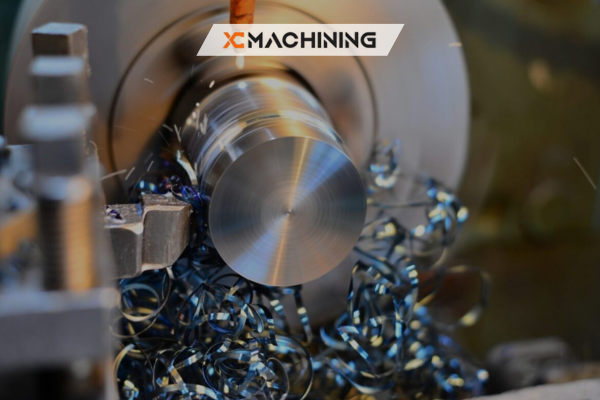
Working with CNC Machining Services
If you outsource production, optimize through vendor partnerships:
Vendor selection criteria:
- Demonstrated high-volume capability
- Modern equipment and automation
- Quality management systems
- Continuous improvement culture
- Transparent communication
Collaboration for optimization:
- Share design early for DFM feedback
- Discuss material and process options
- Allow vendor input on fixturing and tooling
- Review and optimize based on production data
- Establish long-term partnership focused on improvement
Geographic considerations:
- CNC machining services near me Georgia or local providers offer faster communication
- On-site visits enable better collaboration
- Local support reduces lead times for adjustments
- Consider proximity for high-volume relationships
Conclusión
Learning how to optimize Mecanizado CNC for high-volume production isn’t a one-time project—it’s an ongoing commitment to improvement. After 15 years optimizing CNC operations, I’ve learned that the manufacturers who succeed in high-volume production are those who systematically address every aspect of the manufacturing process.
The seven pillars I’ve outlined—DFM, tooling, fixturing, cutting parameters, programming, setup reduction, and quality control—provide a framework for dramatic improvements. Real-world results demonstrate 20-50% cycle time reductions, 30-60% setup time improvements, and overall cost savings of 25-40% are achievable with systematic optimization.
Whether you’re running custom CNC machining services, managing CNC milling and turning services, or operating specialized stainless steel CNC machining services or CNC plastic machining services, these principles apply universally. The specific parameters change with materials and geometries, but the systematic approach to optimization remains constant.
Start with the biggest opportunities—often tooling, fixturing, or design improvements offer more impact than tweaking speeds and feeds. Document everything. Measure results. Share successes across your organization. Build a culture where optimization is everyone’s responsibility.
The manufacturers who master high-volume CNC optimization don’t just survive—they thrive, winning business based on their ability to deliver quality parts at competitive prices while maintaining healthy margins. The investment in optimization pays dividends for years through improved efficiency, reduced costs, and competitive advantage.
To optimize CNC machining successfully, remember: it’s not about working harder—it’s about working smarter through systematic improvement of every element in your production process.

